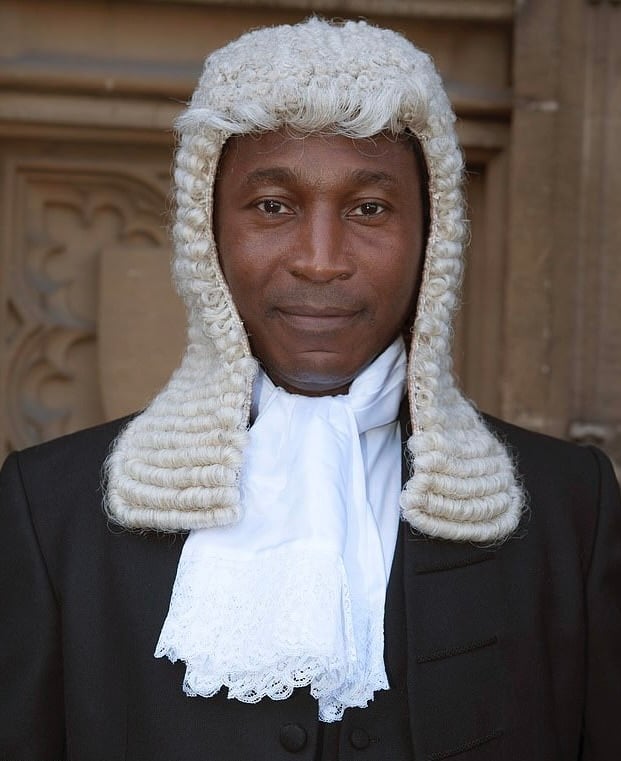Barristers have secured the right to appear in court without their iconic wigs after campaigners argued the Georgian-style hairpieces are discriminatory towards lawyers with certain hairstyles.
Revised guidance from The Bar Council now permits lawyers to forgo their wigs in criminal cases if wearing them proves “uncomfortable or impractical”, marking a significant shift in centuries-old legal tradition.
The change follows complaints from black barristers who argued the hairpieces, which have been a fixture of the English legal system since 1685, were designed exclusively for white people’s hair and create practical difficulties for those with different hair textures.
Leslie Thomas KC, a prominent senior barrister, has called for the wigs to be scrapped entirely, saying they look “ridiculous” on black advocates and are “fashioned for Caucasian hair”. The experienced lawyer branded the traditional headwear as “culturally insensitive”.
Mr Thomas has worked on numerous high-profile cases, including representing families of victims in the Grenfell Tower Inquiry and Mark Duggan’s family during the inquest into his death by police shooting.
Hair Discrimination Concerns
The debate intensified in 2022 when Michael Etienne, a black barrister with an afro, was warned he risked being found in contempt of court if he refused to wear a wig. Mr Etienne subsequently suggested the tradition represented an example of “hair discrimination” within the legal profession.
Whilst white lawyers typically find wearing the wigs straightforward, black barristers who have afros or more voluminous hair often struggle to fit the horsehair pieces over their natural styles.
Requiring black barristers to alter their hairstyles to accommodate the wigs can be both costly and culturally problematic. Many protective hairstyles worn by black people are maintained for extended periods rather than changed daily, making constant adjustments to suit court dress impractical.
The Bar Council, which represents 18,000 barristers across England and Wales, established a working group to review court dress requirements in response to these concerns.
New Guidance Issued
The revised guidance now states that barristers may opt out of wearing wigs without seeking special permission from the court.
It reads: “In some ethnicities, there are associated hairstyle traditions that would make wearing a wig uncomfortable or impractical. In such cases, the relevant barrister need not wear a wig where court dress is required. No application is required.”
The Bar Council clarified the guidance is “intended to ensure court dress requirements do not operate in a discriminatory way in relation to protected characteristics” under equality legislation.
Religious exceptions already existed for lawyers who wear headscarves or turbans as part of their faith. Since 2007, wigs have not been required in family law, civil cases or Supreme Court proceedings, though they remained mandatory in criminal courts until now.
Former Justice Secretary Criticises Move
The decision has sparked controversy, with former Justice Secretary and ex-barrister Sir Robert Buckland yesterday condemning the change as misguided.
Speaking to The Sun, Sir Robert said: “This is a nonsense argument that we have heard many times before and which should not be pandered to. Just like school uniforms, wigs are a great leveller.”
He argued the traditional headwear serves important practical purposes beyond mere ceremony.
“They give young barristers the same status in the eyes of court users as more senior colleagues and are also a great way of helping with the security of barristers as few people recognise them outside court without their wigs on,” Sir Robert added.
The former Conservative MP and senior barrister suggested abandoning the tradition could undermine the anonymity that protects legal professionals from being identified by defendants or their associates outside the courtroom.
Historical Significance
The wearing of wigs by barristers dates back to 1685 during the reign of King Charles II, when they became fashionable amongst the upper classes before being adopted as standard legal attire.
The horsehair wigs were originally powdered white but evolved into the distinctive grey-white colour associated with the legal profession today. They cost several hundred pounds and require regular maintenance.
Supporters of the tradition argue the wigs create a sense of formality and gravitas in court proceedings, whilst also serving as a visual equaliser that prevents discrimination based on a barrister’s age, appearance or personal style.
However, critics contend the practice is outdated and creates unnecessary barriers for lawyers from diverse backgrounds entering the profession.
The Bar Council’s decision reflects broader debates within British institutions about balancing historical traditions with modern inclusivity requirements. Similar discussions have taken place regarding military dress codes, school uniform policies and workplace appearance standards.
Barristers will now have discretion to decide whether wearing a wig is appropriate for their individual circumstances, though many are expected to continue the tradition voluntarily, particularly in high-profile criminal trials where court dress remains standard practice.
Follow for more updates on Britannia Daily



